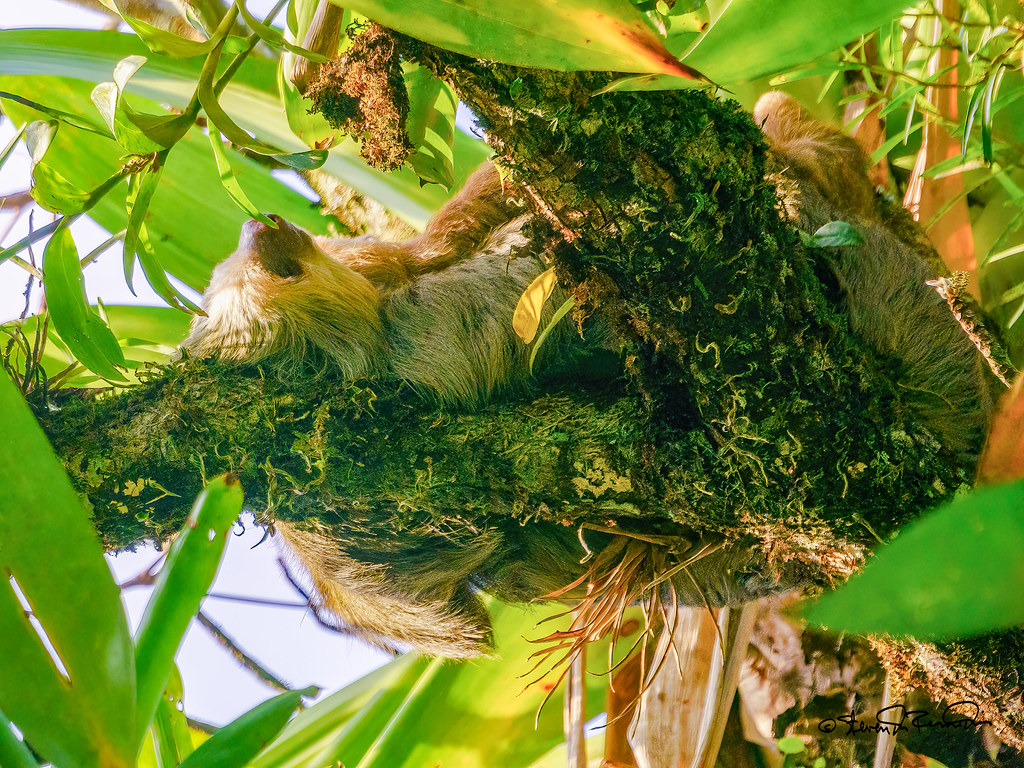Video Slideshow
January 2024 was spent visiting east central Costa Rica which has many rainforests as a result of intensive efforts at conservation.
San Jose


We spent our first day in the country's capital with a visit to the suburbs followed by a walking tour of the civic center.

Escazú, is a charming and upscale suburb often dubbed the "Beverly Hills of Costa Rica. We visited a local mask maker nearby. Máscaras Tradicionales, are a vibrant and unique tradition celebrated on October 31st, known as the National Day of the Traditional Costa Rican Masquerade. Instead of individual costumes, the focus is on large, colorful papier-mâché masks representing mythological figures, historical characters and animals.

The Teatro Nacional de Costa Rica, is a true gem of the country, embodying cultural significance and architectural beauty. The grand foyer is adorned with marble floors, ornate chandeliers, and a ceiling mural, "Allegory of Coffee and Bananas," depicting Costa Rica's agricultural wealth.
Sarapiquí

On our way to Sarapiquí we visited a family-owned coffee farm, or finca. Costa Rica has fertile volcanic soil, creating ideal conditions for growing high-quality Arabica coffee beans.

Ripe coffee "cherries" are carefully hand-picked to ensure quality and optimal flavor. Many farms are adopting sustainable practices like composting, water conservation, and organic farming to protect the environment. Organic certification is too expensive for this small operation and they struggle with competition from larger producers and fluctuating market prices.
After birdwatching at the resort's feeder, we headed off for a white-water rafting experience that was very fun. Then we visited an activist who talked about the side effect of organic pineapple farming.
Debates exist on the true "sustainability" of organic pineapple farming, considering the trade-offs between reduced chemical use and potential environmental and social concerns. Many organic farms use massive sheets of plastic to suppress weeds and retain moisture. While reducing herbicide use, this raises concerns about plastic pollution and microplastics entering the soil and waterways. Additionally, mosquitos that carry disease breed in the many small pools in the sheeting.
Tilajari


Our trip leader arranged for the daughter of the last Maleku shaman to talk with us about preserving the indigenous people's traditions. They have embraced modern technology to help keep their unique language alive by building a smartphone translation app. Some of their customs have run afoul of Costa Rican law regarding burials within a family's home.
The next few night's accommodations were at a former resort with spacious grounds, hosting horses, birds, and monkeys.
We had a "Day-in-the-Life" experience here after a traditional-dance presentation at a local school. We collectively prepared our meal and took a tour of our hosts' home which serves as a communal kitchen.
La Fortuna

Before going to La Fortuna, we detoured to Los Chiles for a wildlife cruise on Rio Frio. We were rewarded by many birds, caimans, lizards and monkeys.
Following our cruise, we visited "Picadillo la Luz", where an entrepreneur devised a method to produce flour from discarded papaya tree-trunks that can be made into salsa.
Next on our agenda was a trip to Arenal Volcano National Park for a rainy nature walk where we saw an Eyelash Viper snake, a Great Curassow, and a wild orchid.
Blue River

Our journey to Blue River included a stop at a cacao farm and medicinal garden. Touring their grounds we learned about growing and harvesting cacao. Then we learned about processing cacao beans into various products.
Our lodge was situated in the foothills of Rincón del la Viejo volcano. As in our other locales, there were many birds, butterflies, and even a sloth. Most of us took a horse ride up to a tropical waterfall, perfect for taking a dip.
Punta Leona

As we crossed the continental divide on our way to Punta Leona, we could sense the change in climate. We quickly adapted to the warm sunny side of Costa Rica. The first evening we went to the beach to watch the sunset.
Our resort resided on a large private nature preserve with macaws and iguanas in residence.
For exercise, we went to an outfitter for outrigger canoes to paddle to our lunch site on a nearby beach. We enjoyed relaxing there and wandering around the tidepools.
On our way back to San Jose for our return home, we took a wildlife cruise on the Tarcoles River, famous for its large crocodile population.

